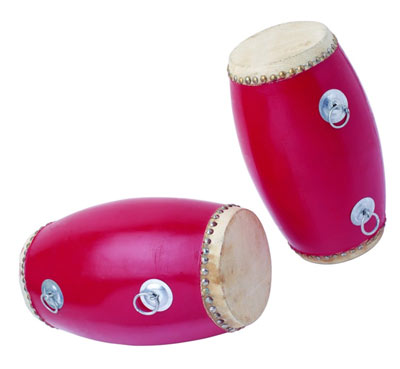 Drum
Drum
 The drum is a percussion instrument frequently used in China. From the perspective of the culture relics these days, the drum has an estimated history of 3,000 years. In ancient times, it was not only used in sacrifices and dancing music, but also in fighting against the enemies and wild beasts. It was also used to sound alarms and tell the time.
The drum is a percussion instrument frequently used in China. From the perspective of the culture relics these days, the drum has an estimated history of 3,000 years. In ancient times, it was not only used in sacrifices and dancing music, but also in fighting against the enemies and wild beasts. It was also used to sound alarms and tell the time.
Along with the social development, the drum has been gradually used in various kinds of activities, such as ethnic bands, operas, folk art forms, singing and dancing, boat races, and festivals and laboring competitions.
The drum has a quite simple structure that is made up of the drum skin and the body. The sounds are produced when a person strikes or laps on the skins. In China, there are many kinds of drums: the yaogu (indicating the drums tied to the waist, with gu meaning drum), dagu, tonggu, and huapengu.
The yaogu is big in the middle and small at the two ends, shaped like a canister. The two ends are covered with cow skin or the skin of a mule. There are two rings on the surface of the drum, tied with a rope to fix up the drum. There are four yaogu specifications, but none with fixed tones. They sound clear, and are often used to perform accompaniments for folk dancing.
Drums are also an instrument for the dancers. While performing, dancers usually hang the drum on the waist, holding drumsticks in both hands and striking it.
